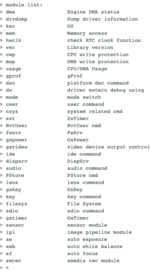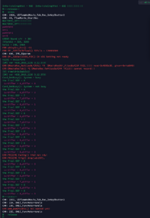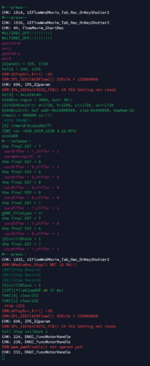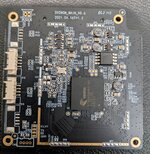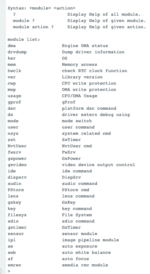Another update:
I've successfully connected an Arduino Nano (acting as a UART TTY serial to USB adapter) to the Kodak digitizer, which had nicely labeled and exposed serial connections.
Setting the baud rate to 115200 allows me to connect and access, with plenty of things to look at!
It let me dump the firmware, run SD card checks... and loads more. More importantly, it's showing me errors and is giving me clues to what is happening (and potentially why) when I give it a firmware with too aspirational resolution / bit rate settings.
The serial pinout is circled below, I only needed to connect Ground, RX and TX. Cool stuff! I'll provide another update if this gets me further.

Update 2:
With the console monitor active it’s easier to see how and why it’s failing (sort of). The CPU is 430MHz and it has 1GB of RAM to work with.
After testing a lot of resolutions I’ve had success with 1920x1440. This means even with some minor post-production zooming/ cropping, you have mostly a full 4x3 ratio HD image.
Sadly at a higher resolution you must lower the bit rate, so 12,400 seems to be the limit with this resolution. But the results aren’t bad. I even opened the camera area and manually adjusted the lens, resulting in a sharper image.
I’ll add some more examples, but this is promising.
I've successfully connected an Arduino Nano (acting as a UART TTY serial to USB adapter) to the Kodak digitizer, which had nicely labeled and exposed serial connections.
Setting the baud rate to 115200 allows me to connect and access, with plenty of things to look at!
It let me dump the firmware, run SD card checks... and loads more. More importantly, it's showing me errors and is giving me clues to what is happening (and potentially why) when I give it a firmware with too aspirational resolution / bit rate settings.
The serial pinout is circled below, I only needed to connect Ground, RX and TX. Cool stuff! I'll provide another update if this gets me further.
Update 2:
With the console monitor active it’s easier to see how and why it’s failing (sort of). The CPU is 430MHz and it has 1GB of RAM to work with.
After testing a lot of resolutions I’ve had success with 1920x1440. This means even with some minor post-production zooming/ cropping, you have mostly a full 4x3 ratio HD image.
Sadly at a higher resolution you must lower the bit rate, so 12,400 seems to be the limit with this resolution. But the results aren’t bad. I even opened the camera area and manually adjusted the lens, resulting in a sharper image.
I’ll add some more examples, but this is promising.
Attachments
Last edited:

